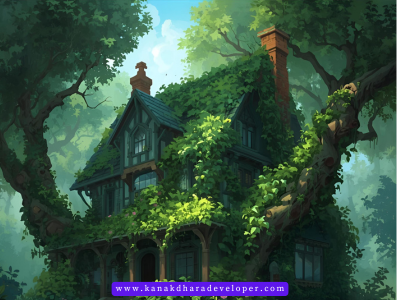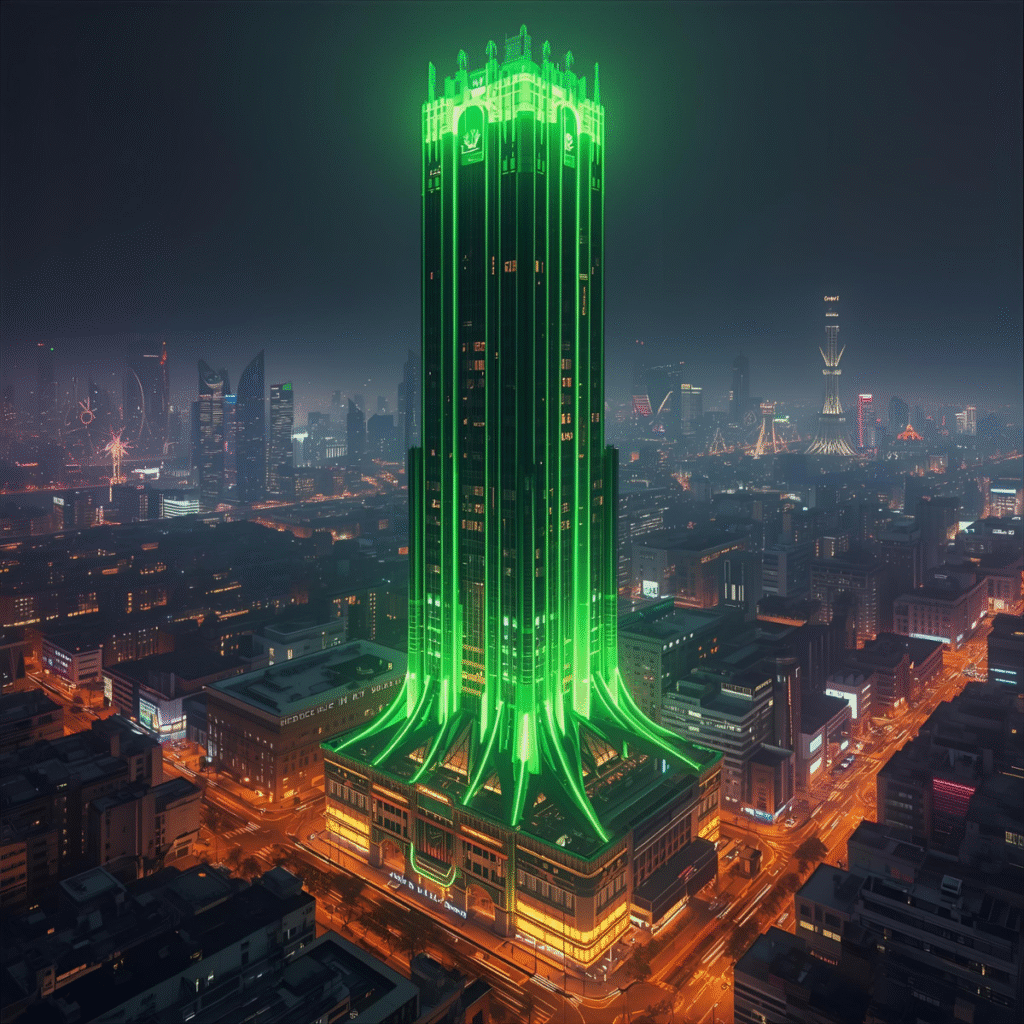In recent years, the demand for sustainable construction has grown rapidly across India and across the world. Rising energy costs, concerns about climate change, and growing awareness about environmental issues have made green building practices a necessity rather than an option. For construction engineers, contractors, and even homeowners, understanding the methods of eco-friendly construction is no longer just desirable—it is an essential part of creating long-lasting, responsible, and cost-effective buildings.
At Kanakdhara Developer Pvt. Ltd., widely recognized as one of the best construction companies in Lucknow, we adopt modern practices that combine quality, durability, and environmental consciousness. From providing interior design services to offering 3D interior design, house map design services, and complete construction solutions, we ensure that sustainability is at the heart of what we deliver. This blog will take you through the meaning of green buildings, why they are important, and how you as a contractor, engineer, or homeowner can apply these practices in real projects.
What is a Green Building?
A green building is designed, constructed, and operated in a way that reduces its negative impact on the environment while enhancing the health and wellbeing of the people who use it. Unlike conventional structures that consume large amounts of energy, water, and materials, green buildings aim to use resources more efficiently and responsibly. They are designed to maximize natural light, reduce energy bills, conserve water, and use materials that are less harmful to the environment.
The concept of a green building goes beyond environmental benefits. It also includes financial savings, improved air quality, better durability, and higher long-term property value. When you think about it, building green is not just about protecting the planet—it is about building smarter for the future.
Why Green Building Practices Matter
The importance of adopting green construction techniques cannot be overstated. Buildings worldwide are responsible for nearly 40% of energy consumption, and in a country like India, where the demand for housing is rapidly rising, this number is only going higher. By shifting to eco-friendly designs and methods, energy consumption can be cut down significantly. Water conservation is another major benefit. With smart plumbing systems, rainwater harvesting, and greywater recycling, buildings can drastically reduce their dependence on fresh water.
Green buildings also minimize construction waste by using recycled and locally sourced materials. This reduces transportation emissions and supports local industries. On the health front, the use of non-toxic paints, improved ventilation, and better natural lighting ensures healthier living conditions. Economically too, green-certified buildings often have higher resale value, lower operational costs, and longer durability. In states like Uttar Pradesh, green buildings are even being encouraged with government incentives and easier approvals.

Principles of Green Building
Every green building is guided by certain core principles. The first principle is sustainable site planning, which involves choosing locations that cause minimal disruption to the environment and planning layouts that allow natural ventilation and sunlight. The second principle is energy efficiency, which focuses on designing spaces that consume less power through the use of LED lighting, efficient HVAC systems, passive solar design, and renewable energy sources like solar or wind.
The third principle is water efficiency, achieved through rainwater harvesting systems, dual-flush toilets, sensor-based taps, and recycling greywater for landscaping. Another principle is material selection. By using recycled steel, fly ash bricks, bamboo, and other eco-friendly materials, buildings not only reduce their carbon footprint but also become more cost-effective. Finally, indoor environmental quality is an equally important aspect. Maximizing daylight penetration, using low-VOC paints, and ensuring proper ventilation improves health and productivity for the occupants.
Techniques for Contractors and Engineers
For contractors and engineers, implementing green building practices means combining technical knowledge with innovative materials and methods. The use of fly ash bricks is one common example. These bricks are strong, eco-friendly, and cheaper than conventional clay bricks. Recycled steel is another option, saving natural resources while lowering CO₂ emissions. Bamboo is increasingly being used as a sustainable and flexible construction material. Insulated concrete forms, which provide better thermal performance, are also gaining popularity.
In terms of energy-efficient design, orienting a building in an east-west direction allows optimal use of sunlight. Installing double-glazed windows reduces heat loss and makes spaces more comfortable. Smart meters and building management systems help monitor and optimize energy use. Renewable energy systems, particularly solar panels, are now being integrated into rooftops across India. Solar water heating is another cost-effective option that reduces electricity demand.
Water management can be made smarter through rainwater harvesting pits integrated in the house map design, permeable paving materials that recharge groundwater, and bathrooms equipped with water-saving fixtures. Even interior design services are adapting green practices. Bedrooms can be designed with natural fabrics and better ventilation, kitchens with recycled countertops and energy-efficient appliances, and bathrooms with eco-friendly tiles and sensor-based lighting.
Case Study: Green Practices in Uttar Pradesh
In Uttar Pradesh, the need for sustainable construction is especially critical given the fast-paced urbanization in cities like Lucknow, Kanpur, and Varanasi. At Kanakdhara, we often use 3D interior design tools to show clients how sustainable layouts will look and function before construction begins. For example, by planning a kitchen interior with large windows in the right direction, artificial lighting can be reduced during daytime. Similarly, bathroom interiors designed with sensor-based taps can save up to 30% of water usage.
This approach not only makes buildings eco-friendly but also reduces long-term costs for the client. As a result, sustainability becomes a win-win choice for both homeowners and professionals.
The Role of Technology in Green Construction
Modern construction is greatly benefiting from technological tools such as Building Information Modeling (BIM) and advanced 3D walkthroughs. These tools help engineers identify energy loss areas, simulate natural light flow, and plan HVAC systems efficiently. With such planning, mistakes can be minimized even before the first brick is laid.
At Kanakdhara, our house map design services use these technologies to ensure every project is resource-efficient from the beginning. By integrating smart tools, contractors and engineers gain the ability to optimize designs not only for beauty and functionality but also for sustainability.
Benefits for Professionals
For construction professionals, adopting green practices is not just an environmental responsibility but also a business advantage. The demand for eco-friendly homes and offices is rising rapidly, especially among urban clients who are conscious of long-term benefits. Builders and contractors with expertise in sustainable techniques gain a competitive edge. Green projects also reduce wastage, improve cost efficiency, and are easier to maintain. Certifications like LEED, IGBC, or GRIHA further enhance the credibility of professionals, attracting more clients.

The Future of Green Building in India
India’s construction sector is expected to be worth over one trillion dollars in the coming decade, and green buildings will be at the forefront of this growth. By 2030, it is estimated that half of all new constructions in India will adopt sustainable methods. Net-zero energy buildings will become the norm, while innovative materials like self-healing concrete and energy-storing walls will transform the industry.
In Uttar Pradesh, cities like Lucknow and Prayagraj are already showing a strong trend towards eco-conscious homeowners. The combination of affordability, government encouragement, and public awareness is paving the way for a green construction revolution.
Conclusion
Green building practices are no longer a niche concept—they are the foundation of modern construction. Whether you are a homeowner who wants a cost-effective, energy-saving house, or a contractor or engineer who wants to deliver future-ready projects, adopting sustainable methods ensures long-term success. From energy savings and water conservation to improved health and higher resale value, the benefits are undeniable.
At Kanakdhara Developer Pvt. Ltd., we combine interior design services, 3D interior design, house map design services, and eco-conscious construction methods to deliver not just homes but complete lifestyles that are functional, beautiful, and sustainable. As one of the best construction companies in Lucknow, we are committed to building a greener tomorrow—one project at a time.
